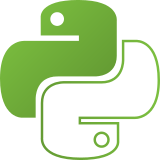Qt Python Signal Slot
April 25, 2011 at 13:38 Tags Python, Qt A frequent question coming up when programming with PyQt is how to pass extra arguments to slots. After all, the signal-slot connection mechanism only specifies how to connect a signal to a slot - the signal's arguments are passed to the slot, but no additional (user-defined) arguments may be directly passed. These signals can be connected to any callable, that is, to any function or method, including Qt slots; they can also be connected using the SLOT syntax, with a slotSignature. PyQt checks to see whether the signal is a Qt signal, and if it is not it assumes it is a Python signal. The signals and slots mechanism is a central feature of Qt. In GUI programming, when we change one widget, we often want another widget to be notified. More generally, we want objects of any kind to be able to communicate with one another. Signals are emitted by objects when they change their state in a way that may be interesting to other objects. NEW PYTHON DEVELOPMENT COURSE! CLICK HERE For more information and code download please visit Video 12 - We. It would be possible to have the slots to which the resized and moved signals are connected check the new position or size of the circle and respond accordingly, but it's more convenient and requires less knowledge of circles by the slot functions if the signal that is sent can include that information.
This article mainly introduces PyQt5 daily must learn events and signals related information, has some reference value, interested partners can refer to
In this section we will explore how PyQt5’s events and signals are implemented in the application.
Book: Create Desktop Apps with Python PyQt5
Events
All GUI applications are event-driven. Application events are generated primarily from users, but they can also be generated by other means, such as an Internet connection, a window manager, or a timer. When we call the exec_() method of the application, the application enters the main loop. The main loop detects various events and sends them to the event object.
Qt Designer Python Signal Slot

In the event model, there are three participants.
- event source
- event object
- event target
An event source is a change in the state of an object that generates an event. An event object (event) is an object that encapsulates a state change in the event source. The event target is the object that wants to be notified. The event source object represents the task of processing an event to the event target.
PyQt5 uses a unique signal and slot mechanism to handle events. Signals and slots are used for communication between objects, and when a particular event occurs, the signal is fired. The slot can be any Python call. The connection to the slot is called while the signal is transmitting.
Signals & slots
Here’s a simple example to demonstrate PyQt5’s signal and slot.
In our example, QtGui.QLCDNumber and QtGui.QSlider will be used. we change the LCD numbers by dragging the slider.
Here, the slider’s valueChanged signal is connected to the LCD’s display (display) slot.
A transmitter is an object that sends a signal. The receiver is the object that receives the signal. What slots is the method of feedback to the signal.
Python Qt Signal Slot
Overwrite the system event handler. You can use any key to fire an event.
In the example below the escape key triggers an event that quits the program.
In our example, we reimplement the keyPressEvent() event handler.
If we press the Esc key on the keyboard, the application terminates.
Book: Create Desktop Apps with Python PyQt5
Event sender event send
Python Qt Signal Slot Example
To facilitate differentiation of multiple event sources connected to the same event target, the sender() method can be used in PyQt5.
In our example there are two buttons. Both buttons are connected to the buttonClicked() method and we respond to the clicked button by calling the sender() method.
Qt For Python Signal Slot
The two buttons are connected to the same slot.
We determine the signal source by calling the sender() method. In the application’s status bar, the label of the button that was pressed is displayed.
Qt Python Signal Slot Machine
Customized emission signals
An object created from a QObject can signal. In the following example, we’ll look at how we can customize the signal sent.
We create a new signal called closeApp. This signal is emitted by the mouse press event. This signal is connected to the close() slot in QMainWindow.
Creates a Communicate class inherited from QObject, which has a property of the pyqtSignal() class.
Connect our custom closeApp signal to the close() slot in QMainWindow.
The CloseApp signal is emitted (emit) when our mouse clicks in the program window: application termination.
Book: Create Desktop Apps with Python PyQt5